October 1, 2016 Warren v. The East Orange (NJ) Board of Education
13-year-old Jasmine Warren experienced a non-fatal near-drowning incident while participating in a required physical education swim class during school in 2004. As a result of this incident, a personal injury lawsuit was filed. The case finally settled in May 2012.
Author: Gerald M. Dworkin
Date: November 13, 2012
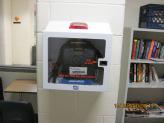
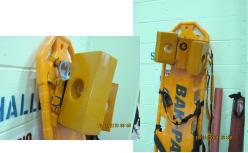
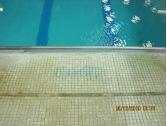
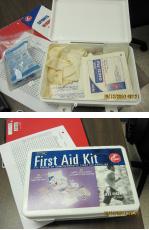
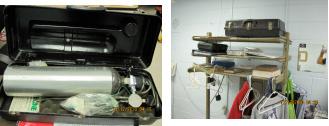
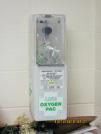
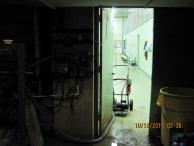
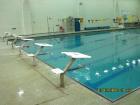

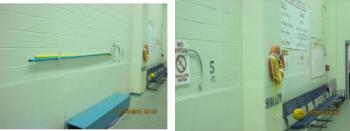
On October 26, 2004 13-year-old Jasmine Warren was participating in a Healy Middle School Physical Education swim class. She was considered “one of the better swimmers” and was assigned to Group 3. This group was swimming laps in the pool under the supervision of two Physical Education/Swimming teachers, Ms. Jennifer A. Longo and Ms. Patricia Landon.
Group 3 was instructed to swim laps by entering the water in the deep end of the swimming pool, swimming towards the rope in the shallow end, climb out of the pool, walk back to the deep end, and continue with additional laps. Ms. Longo was responsible for supervising Group 3, as well as testing an individual student, while Ms. Landon was responsible for Groups 1 and 2 in the shallow end of the pool. There were approximately 7 students in Group 3 at the time.
Jasmine had come to class without her bathing suit. According to the East Orange School District Incident Report, she had asked if she could go back to her classroom to get her bathing suit, but was told she could not leave the pool area. It was also reported that Jasmine had told Ms. Landon that she was not feeling well and asked to be excused from participating in the swim class. However, the next time the teachers saw Jasmine, she was entering the pool area wearing her bathing suit.
While Jasmine was swimming laps, she submerged in the deep (6’) section of the pool. According to Erica Chism, she observed Jasmine on the pool bottom and after several minutes she tried to rescue Jasmine, but was unable to do so. When Erica surfaced, she attempted to get the attention of Longo and Landon, but could not get their attention. At some point, “Ms. Longo noticed a student under water from the other side of the pool; she yelled to Ms. Landon that a student was under water” . Ms. Longo instructed Ms. Landon to call the Main Office for help. She then ran to the side of the pool and entered the pool to rescue Jasmine.
The initial 911 call was made by Candace Rokes who was painting on the 3rd floor at Patrick Healy. Ms. Rokes had been advised by several of the students at the school of the incident.
Ms. Longo contacted Jasmine on the bottom of the pool in approximately 6’ of water. She brought her to the surface, and then initiated rescue breaths while still in the water. Ms. Landon then assisted in removing Jasmine from the water and placed her onto the pool deck.
Once Ms. Longo removed herself from the pool, she then administered two abdominal thrusts “forcing a large amount of water from the student’s mouth and nose.” Jasmine remained unresponsive, and even though Ms. Landon said she felt a weak pulse, both Ms. Longo and Ms. Landon administered CPR to Jasmine. According to the Incident Report written by Baruti K. Kafele, Principal, CPR, rescue breathing, and abdominal thrusts were “done by both Longo and Pat Landon….”
Ms. Goodwyn, another Physical Education teacher, had been on the main floor of the school when she heard students screaming, “she’s drowning, she’s drowning, we have to get the nurse.” Goodwyn then entered the Health Office to inform the nurse, Mary deStefano, about the emergency. Just prior to her entering the Health Office, the Costley Main Office called to inform the nurse of the emergency.
Ms. Goodwyn then responded to the pool area. Upon entering the pool area, she saw Jasmine lying on the pool deck with CPR being provided by Longo and Landon. She then relieved Longo and began administering rescue breathing, while Landon continued with chest compressions. CPR was continued for several minutes until the police arrived. All the students had previously evacuated the pool area and were in the locker rooms while resuscitation efforts were being administered to Jasmine by Longo, Landon, and Goodwyn.
After securing the office, Nurse deStefano, along with Dr. Grober, a school physician, then responded to the pool area. According to Ms. deStefano, it took her approximately 2 – 3 minutes to respond to the pool area.
When Ms. deStefano arrived in the pool area, she observed a police officer and one of the swim coaches performing CPR on Jasmine. Other security personnel were at the doors. Security personnel advised her that EMS had been called. She then requested security to advise EMS that CPR was in progress and that the MICU paramedics should also be called.
She asked the rescuers to stop and she listened for a heart beat. “They stopped for a minute, and I listened. And there was a weak pulse. And they continued CPR.” She then dried Jasmine off with a towel and then they stopped CPR as they moved her further from the pool. Sgt. Hall, along with Officer Green then relieved the teachers and took over the administration of CPR.
Nurse deStefano then left the pool area to return to her office to retrieve the medical records for Jasmine. According to Ms. deStefano, Dr. Grober didn’t participate in the resuscitation efforts – he only observed. Ms. deStefano then returned to the pool area with the files, which she did not provide the EMTs. She did review the files and Jasmine was negative for any contributing medical history or medications. Once the paramedics arrived on scene, according to Ms. deStefano, she had no conversations with them.
CPR was continued until East Orange Fire personnel arrived. Upon their arrival, Fire personnel took over CPR and deployed the use of their Automated External Defibrillator (AED). Four shocks were administered and Jasmine converted from cardiac and respiratory arrest to respiratory arrest only.
Upon arrival of EMS personnel, oxygen was administered to Jasmine via a Bag-Valve-Mask (BVM) resuscitator. And, an oral airway was inserted and suction equipment was used to suction and clear her airway.
Jasmine was packaged and transported to University Hospital in Newark. She was admitted at approximately 9:20 AM with an admitting diagnosis of near-drowning with respiratory arrest.
________________________________________________________
A site visit was conducted on October 12, 2010, six years after this incident. The following are some of the findings observed during this site visit:
Two AEDs were observed – one in the Health Office, and one was mounted on the wall of the swimming pool. Both were Medtronic LifePak Defibrillators. However, on the day of the incident, no AED was available until the Fire Department personnel arrived on scene.
A Life Oxygen Pac was also observed mounted on a wall in the Health Office. However, no oxygen was administered to Jasmine on the day of the incident until EMS arrived on scene. It is not known whether or not oxygen equipment was available in the Health Office on the day of the incident.
Within the pool area, a backboard was leaning against the wall adjacent to the AED. However, this backboard could not be readily and effectively deployed for use on a suspected spinal injured patient as the head immobilizer was not secured to the board properly. Although this backboard has nothing to do with the submersion incident of Jasmine, it is indicative of how poorly operated this facility is.
A warning sign was posted stating: Warning Prevent Drowning. This commercially developed sign states that “A qualified lifeguard should be present at all times when swimmers are in or around the water.” It also states that “Young children should be watched at all times.” At the time of the Jasmine’s submersion, although there were two teachers present, neither one was serving as a lifeguard and neither one was providing effective surveillance, patron safety or protection.
The depth markers on the deck throughout the pool area were ineligible.
The pump room had a lot of water on the floor which is a danger to anyone working with electrical components while in this room.
There were several first aid kits observed in the pool office. However, these kits only contained minimal equipment.
There was an inoperable oxygen administration unit in the pool office. However, it was evident this unit had not been inspected or used for quite some time. The non-rebreathing mask contained inside the unit was completely deteriorated. The unit was contained inside a black plastic box on the top shelf of the coat rack. This unit was either not available or not used on the day of the incident as oxygen was not administered to Jasmine until after the arrival of EMS personnel on scene.
No Positive Pressure Ventilation equipment was observed anywhere in the pool office. There was a Personal Resuscitation Mask contained within a sealed plastic bag inside the AED storage box. However, no Bag-Valve-Mask Resuscitators or manual hand-held Suction Devices were observed anywhere within the facility, nor were there any additional Personal Resuscitation Masks.


